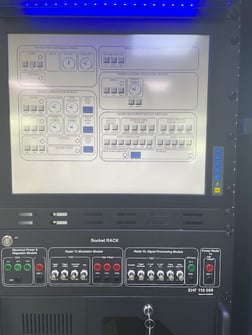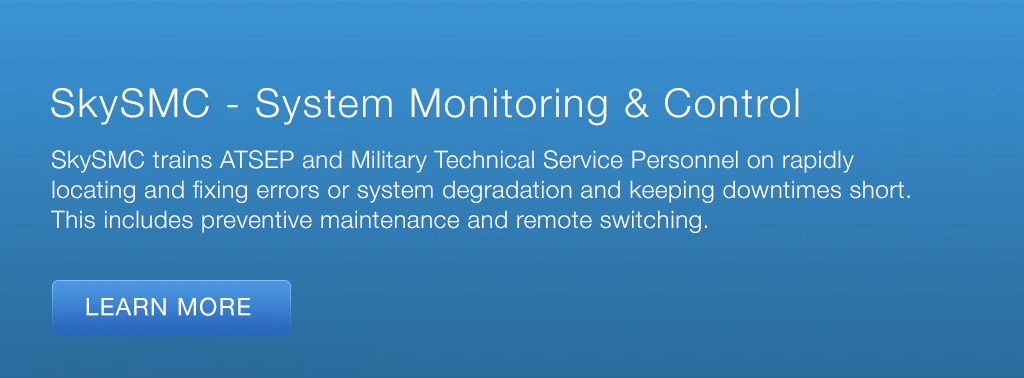The aviation industry is highly dependent on communication systems for ensuring safe and efficient air travel. Any errors in these communication systems can result in serious consequences, including accidents and incidents. One type of communication error that can occur in air traffic control (ATC) services is receiver errors due to bandwidth. This article will explore the impact of receiver errors due to bandwidth on ATC services, the factors responsible for such errors, the common types of receiver errors caused by bandwidth, reported aviation incidents due to these errors, and the steps that ATSEP can take to rectify and prevent these errors.
Definition of Receiver Errors due to Bandwidth
Receiver errors due to bandwidth occur when the bandwidth of the receiver is insufficient to receive the required signal. Bandwidth is the range of frequencies that a communication system can transmit or receive. When the bandwidth of a receiver is insufficient, it can result in distortion, noise, or even a complete loss of the signal. This can cause serious communication errors in ATC services, resulting in potential safety hazards.
What is Bandwidth?
Bandwidth refers to the amount of data that can be transmitted over a communication channel in a given period of time. It is usually measured in bits per second (bps) or bytes per second (Bps). A higher bandwidth means that more data can be transmitted or received in a given period of time. For example, a high-speed internet connection has a higher bandwidth than a dial-up connection, allowing for faster data transfer rates.
Factors Responsible for Bandwidth related Receiver Errors
Bandwidth-related receiver errors can occur due to various factors. Here are some common factors that can contribute to these errors:
Noise
Noise in the communication channel can introduce errors in the received signal. It can be caused by various sources such as thermal noise, intermodulation noise, crosstalk, or electromagnetic interference. As the bandwidth increases, the susceptibility to noise also increases, leading to more errors.
Interference
Interference from other nearby devices or signals can corrupt the received signal. This interference can arise from sources such as other wireless devices, adjacent channels, or even atmospheric conditions. As the bandwidth increases, the likelihood of interference also increases, resulting in more errors.
Channel Attenuation and Distortion
Higher bandwidth signals are more susceptible to attenuation and distortion as they travel through the communication channel. Attenuation refers to the loss of signal strength, while distortion refers to changes in the signal's shape or characteristics. These factors can cause errors in the received signal, especially when the signal experiences significant degradation over the bandwidth.
Multipath Propagation
In wireless communication, multipath propagation occurs when signals take multiple paths to reach the receiver due to reflections, diffractions, or scattering. In high-bandwidth scenarios, the received signal can experience delay spread, where different components of the signal arrive at different times. This can lead to intersymbol interference (ISI), causing errors in the received data.
Limited Bandwidth of the Receiver
If the receiver's bandwidth is not sufficient to handle the transmitted signal's bandwidth, it can result in errors. This limitation can cause distortion or loss of information during the reception process.
Timing and Synchronization Issues
In high-bandwidth systems, accurate timing and synchronization become critical. If there are errors in the timing recovery or synchronization process, it can lead to data corruption and reception errors.
Nonlinearities in Components
Nonlinearities in the components of the receiver, such as amplifiers or mixers, can introduce distortion and intermodulation products. These nonlinearities become more pronounced with increasing bandwidth and can contribute to receiver errors.
Signal-to-Noise Ratio (SNR)
The SNR represents the ratio of the signal power to the noise power in the received signal. As the bandwidth increases, the power of the received signal spreads over a wider frequency range, resulting in a decrease in the SNR. If the SNR falls below a certain threshold, errors can occur during signal detection and demodulation.
Common Types of Receiver Errors caused by Bandwidth
When it comes to bandwidth-related receiver errors, there are several common types that can occur. These errors can degrade the quality of the received signal and affect the accuracy of the transmitted data. Here are some of the most prevalent types of receiver errors caused by bandwidth:
Intersymbol Interference (ISI)
ISI occurs when the transmitted symbols overlap in time due to the limited bandwidth of the channel. As a result, the receiver may struggle to distinguish between successive symbols accurately. ISI can lead to errors in symbol detection and cause a degradation in the bit error rate (BER).
Noise-Induced Errors
As the bandwidth increases, the susceptibility to noise also increases. Noise can corrupt the received signal, resulting in errors during signal detection. The presence of noise can cause bit errors or degrade the signal-to-noise ratio (SNR), leading to a higher BER.
Crosstalk
In scenarios where multiple signals are transmitted simultaneously over different channels or wires, crosstalk can occur. Crosstalk refers to the unwanted coupling of signals between adjacent channels or wires. When the bandwidth is wide, the potential for crosstalk interference between channels increases, leading to errors in the received signal.
Interference from Adjacent Channels
In communication systems with closely spaced frequency channels, there is a possibility of interference from adjacent channels. If the receiver is not adequately selective or if there is insufficient guard band between channels, the energy from neighboring channels can spill over and corrupt the received signal. This interference can result in errors during signal demodulation and decoding.
Timing and Synchronization Errors
High-bandwidth signals require accurate timing and synchronization at the receiver. Timing errors can occur due to clock drift, clock jitter, or synchronization issues between the transmitter and receiver. These errors can lead to misalignment of symbols or frames, resulting in errors during signal recovery and decoding.
Nonlinear Distortion
Nonlinearities in the receiver components, such as amplifiers or mixers, can introduce distortion in the received signal. Nonlinear distortion becomes more pronounced with increasing bandwidth and can cause errors in the demodulation process. It can result in signal amplitude and phase distortions, leading to symbol errors and degradation of the received data.
Frequency Selectivity and Channel Fading
In wireless communication systems, the channel can exhibit frequency-selective fading, where different frequency components of the signal experience different levels of attenuation or distortion. This frequency selectivity can lead to errors in the received signal, especially when the receiver's bandwidth is not sufficient to capture the entire frequency range of the channel.
Let's consider a scenario that illustrates the impact of receiver errors related to bandwidth on air traffic control services
Imagine you are an air traffic controller working at a busy airport. Your job is to ensure the safety of hundreds of flights and thousands of passengers every day. You rely on radio communication to communicate with pilots and provide instructions for takeoff, landing, and navigation.
One day, you start experiencing receiver errors related to bandwidth on your communication system. You notice that the received signals are distorted, noisy, and difficult to understand. You might hear the pilot's voice breaking up or missing words, or the signal may cut out entirely. This can make it challenging to communicate critical information such as flight instructions, altitude changes, or weather conditions.
As a result of these receiver errors, you may struggle to maintain clear and accurate communication with pilots, which can impact the safety and efficiency of air traffic control services. Miscommunications or misunderstandings can lead to confusion, delays, or even accidents. For example, if you fail to provide critical instructions to a pilot, they may make a mistake during takeoff or landing, leading to a runway incursion or a near-miss.
To mitigate these risks, it's crucial to have reliable communication systems with sufficient bandwidth and low error rates. The air traffic control industry has invested heavily in communication technologies such as Very High Frequency (VHF) radio, satellite-based communication systems, and digital voice communication systems. These systems employ error correction coding, signal processing techniques, and redundancy to improve the quality and reliability of communication.
In summary, receiver errors related to bandwidth can have severe consequences in air traffic control services. It's essential to have reliable communication systems that can handle the high-bandwidth demands of the aviation industry and minimize the risk of errors and miscommunications. As an air traffic controller, it's your responsibility to ensure clear and accurate communication with pilots to ensure the safety and efficiency of air travel.
Impact of Bandwidth related Receiver Errors
Receiver errors due to bandwidth can have a significant impact on ATC services. Communication errors can lead to misunderstandings between pilots and controllers, potentially resulting in accidents or incidents. They can also cause delays in communication, which can affect the efficiency of air traffic flow. In some cases, receiver errors due to bandwidth have been linked to aviation incidents, highlighting the importance of addressing these errors.
Steps to be taken by ATSEP in Rectification of Receiver Errors related to Bandwidth:
When an Air Traffic Safety Electronics Personnel (ATSEP) encounters receiver errors related to bandwidth, there are several steps they can take to rectify the issue. Here's a general outline of the process:
Identify the symptoms
Determine the specific symptoms or indications that point to receiver errors related to bandwidth. This could include issues such as degraded signal quality, increased noise levels, reduced data throughput, or any other abnormalities that affect the receiver's performance.
Analyze the system
Gain a thorough understanding of the receiver system and its associated components. This includes examining the receiver's specifications, configuration settings, and any relevant documentation or manuals. Identify the bandwidth-related parameters and constraints for the specific receiver.
Verify the environment
Assess the external factors that may be influencing the receiver's bandwidth performance. Factors such as interference from other electronic devices, physical obstructions, or atmospheric conditions can impact bandwidth. Eliminate or minimize these external factors if possible.
Check receiver settings
Review the receiver's settings and configuration to ensure they are optimized for the desired bandwidth. Verify that the receiver is configured to operate within the appropriate frequency range and that any filters or modulation settings are correctly configured.
Verify signal source
Ensure that the signal source or transmission being received is compatible with the receiver's bandwidth requirements. Confirm that the bandwidth of the signal matches or falls within the receiver's specified range. If necessary, consult with the responsible personnel or experts who are responsible for the signal source.
Perform diagnostics
Utilize diagnostic tools and techniques to analyze the receiver's performance. This may involve using specialized software, test equipment, or built-in diagnostic features of the receiver. Collect relevant data on bandwidth-related parameters such as signal strength, signal-to-noise ratio, or bit error rates.
Troubleshoot and isolate
Based on the diagnostics results, identify the specific areas or components that may be causing the bandwidth-related errors. This could include issues with antennas, filters, amplifiers, cables, connectors, or other parts of the receiver system. Troubleshoot each component systematically to identify and isolate the root cause of the problem.
Rectify the issue
Once the root cause is identified, take appropriate actions to rectify the problem. This could involve repairing or replacing faulty components, adjusting settings, recalibrating the receiver, or optimizing the receiver's setup for improved bandwidth performance.
Test and validate
After making the necessary adjustments, conduct thorough testing to ensure that the receiver's bandwidth-related errors have been resolved. Use appropriate test procedures, signal sources, and performance metrics to verify that the receiver is operating within the expected bandwidth parameters.
Document the resolution
Document the entire process, including the symptoms, diagnostic results, troubleshooting steps, and the final resolution. This documentation will serve as a reference for future maintenance, troubleshooting, or for sharing knowledge within the ATSEP team.
It's important to note that the specific steps and procedures may vary depending on the type of receiver, the system being used, and the organization's guidelines. ATSEPs are typically trained in specific procedures and protocols to handle receiver errors, and they should follow the prescribed guidelines provided by their organization.
Steps to be followed by ATSEP for preventing Bandwidth related Receiver Errors
Preventing bandwidth-related receiver errors in ATC services requires a proactive approach that involves identifying potential issues before they occur and taking steps to mitigate them. Here are some steps that ATSEP can take to prevent bandwidth-related receiver errors
Regularly assess and optimize the communication system
ATSEP can perform regular assessments of the communication system to identify areas where bandwidth may be an issue. They can then take steps to optimize these areas, such as installing additional receivers or antennas to improve signal strength, and upgrading the communication system to support higher bandwidth.
Monitor signal strength and interference levels
ATSEP can monitor signal strength and interference levels in the communication system to identify potential issues before they impact communication quality. They can use this data to adjust the communication system as needed to optimize performance.
Implement regular maintenance and testing procedures
Regular maintenance and testing procedures can help prevent bandwidth-related receiver errors by identifying potential issues before they become significant problems. This may include checking for damaged or worn equipment, updating software and firmware, and testing the communication system for signal strength and interference.
Collaborate with communication equipment manufacturers
ATSEP can work with communication equipment manufacturers to develop and implement solutions that improve the performance of the communication system. This may involve developing new antenna designs, improving signal processing algorithms, and increasing the sensitivity of receivers.
By taking a proactive approach to preventing bandwidth-related receiver errors, ATSEP can help ensure that the communication system operates at optimal performance and helps maintain safe and efficient air travel.
How to Prevent Errors Due to Bandwidth
Preventing errors due to bandwidth in ATC services requires a combination of technical solutions and best practices. Here are some strategies that can help prevent errors due to bandwidth:
Implement frequency management protocols
ATC services should implement frequency management protocols to ensure that each frequency is allocated to a specific user or group of users. This can help prevent bandwidth-related errors by reducing the number of users on a particular frequency.
Use encryption and authentication protocols
Encryption and authentication protocols can help prevent bandwidth-related errors by ensuring that communication is secure and authenticated. This can prevent unauthorized users from accessing the communication system and causing interference.
Implement redundancy and backup systems
Redundancy and backup systems can help prevent errors due to bandwidth by providing an alternate communication system in the event of a failure or outage. This can ensure that critical communication channels remain operational at all times.
Regularly monitor and optimize the communication system
Regular monitoring and optimization of the communication system can help prevent errors due to bandwidth by identifying potential issues before they become significant problems. ATSEP can regularly monitor the communication system's bandwidth usage, identify any bottlenecks, and take necessary steps to optimize the system's performance. For example, ATSEP can adjust the modulation techniques used in the communication system, install signal boosters to strengthen weak signals, or upgrade the communication hardware to increase bandwidth capacity.
Conduct regular training for ATC personnel
ATC personnel should receive regular training on how to operate and maintain the communication system properly. This training can include best practices for reducing bandwidth usage, troubleshooting common errors, and identifying potential issues before they escalate. By ensuring that ATC personnel are well-versed in the communication system's proper usage, ATSEP can minimize the risk of bandwidth-related errors.
Regularly update communication protocols
Communication protocols used in ATC services can become outdated over time, leading to errors due to bandwidth. To prevent this, ATSEP should regularly review and update communication protocols to ensure they remain relevant and optimized for the communication system's bandwidth capacity. This can include implementing new compression algorithms, adjusting signal processing parameters, or adopting new modulation techniques.
Implement redundancy in the communication system
ATC services can implement redundancy in the communication system to prevent errors due to bandwidth. This can include installing backup communication systems that can take over in case the primary system fails or becomes overloaded. Redundancy can also be achieved by using multiple communication channels simultaneously, thereby spreading the communication load across multiple channels and reducing the risk of errors due to bandwidth.
SkyRadar's System Monitoring & Control Solution
SkySMC - SkyRadar’s System Monitoring and Control Suite is a pedagogically enhanced, fully operational monitoring & control tool. It has been designed to practice these use cases. We have optimized it to host ATSEP training in SUR, NAV, COM, DPR and SMC compliant to EASA's Easy Access Rules for ATM-ANS (Regulation (EU) 2017/373) and ICAO Doc 10057.
SkyRadar provides SkySMC as a complete laboratory in a turn-key approach, or as a virtual infrastructure (for purchase or as a service).
SkySMC is not a simulator, but a fully operational open monitoring system. It comes by default with a server including various virtualized applications and virtualized servers, but also connects to simulated systems. In addition, there are various hardware extensions available including training infrastructures, monitorable training radars, or even complete ATM systems, all connected to the System Monitoring & Control solution. Most components such as the radars, it IT infrastructure or networks exist in hardware and software (virtualized or simulated).
The two photos above show the same trouble-shooting panel and socket rack in real hardware and in the simulator (fully functioning).
SkyRadar's System Monitoring & Control training system can be easily blended into distance learning solutions and existing learning management systems.
Let's talk
Stay tuned to be always the first to learn about new use cases and training solutions in ATSEP qualification (real radars or simulators).
Or simply talk to us to discuss your training solution.
References
- "Bandwidth (Signal Processing)" by Wikipedia. Wikimedia Foundation, 11 Mar. 2021.
- "Error Detection and Correction Techniques for Communication Systems" by International Journal of Advanced Research in Electrical, Electronics and Instrumentation Engineering, 2013.
- "The Importance of Communication in Aviation Safety" by Flight Safety Foundation.






